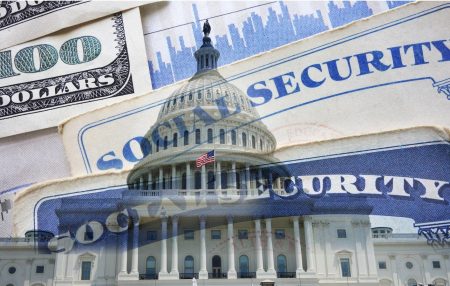Rhode Island made news this month when it became the twentieth state to establish a state-facilitated retirement savings program and the seventeenth to do so with an auto-IRA model. This action by the Rhode Island legislature means every state in New England, except New Hampshire, will now offer a state-facilitated savings program. States elsewhere in the nation are considering these programs as well, including large states like Michigan and Pennsylvania, with millions of potential beneficiaries in those states.
State legislatures are adopting these programs because they are both good policy and good politics. These programs represent a real effort to close the persistent retirement plan access gap in the U.S. At any given moment over the past 45 years, half or more of American workers have not been participating in either a defined benefit (DB) or defined contribution (DC) retirement plan through their employer. This lack of coverage means these working Americans are much less likely to save for retirement and, therefore, less likely to be financially independent after their working years have ended.
The groups of workers who don’t have an employer-provided retirement plan have been largely the same over time. Lower-income workers, service-sector workers, and employees of small businesses are all much less likely to have access to a retirement plan at work. It’s not that these workers don’t want to save. Surveys of workers typically find that they want to save for retirement and participation rates are usually high when workers have access. But we know workers do not tend to set up a retirement plan on their own, especially those who may be working multiple jobs. At the same time, the administrative burden for small businesses to establish and offer a retirement plan is also high, which is part of the reason why so few do it.
This is why these state-facilitated retirement programs are also good politics. These programs address a market failure, as financial institutions managing retirement plans for large companies have little financial incentive to seek out small-dollar individual accounts. This leaves half of the workforce in a quandary: no retirement plan at work, but also not sought out as a customer by financial institutions. Thus, states are taking action by pooling small accounts and creating efficiencies in a way that the individual market can’t. But as successful market interventions should, this is having a positive impact for retirement plan providers. Early evidence suggests that private employers in states with these programs are increasing the number of private retirement plans, like 401(k)s, being offered. Faced with a choice between participating in the state-facilitated program and sponsoring their own plan, some employers are deciding to sponsor their own plan, which is great news.
Last year the National Institute on Retirement Security (NIRS) surveyed Americans on their views on retirement, including their views regarding these state-facilitated retirement savings programs. The response was overwhelmingly positive. Strong majorities indicated that they liked the idea of the programs and that they would participate in a program if it was offered in their state. Moreover, these strongly positive views hold across both generation and partisan affiliation. It seems that nearly all Americans like the idea of making it easier for Americans to save for retirement.
While the continuing adoption of these programs by more states is encouraging, another hopeful sign is the innovation that is occurring. These programs are less than a decade old, but there already have been key innovations, including the creation of the first multi-state compact in which multiple states join together to reduce administrative costs and achieve efficiencies via scale. The first compact, led by Colorado, also includes Delaware, Maine, and Vermont. The multi-state compact represents a likely next step in the development of these savings programs. It is possible that other states may join the Colorado-led compact, or a different group of states may join together to form their own compact. Regardless, the more states can reduce costs and administrative burdens, the more appealing these programs will be for employers and employees, and the more efficiently they’ll be run.
Moreover, there is also early evidence that these savings programs are having a positive impact on the labor force. Recent research found that the presence of these programs in a state led to a modest increase in the private-sector labor force and may also contribute to an increase in earnings. This is not surprising as benefits and other forms of compensation have long been used to incentivize workers. Given the tight labor market and the clear desire from most workers for a way to save for retirement at work, businesses that offer a way to save can distinguish themselves from other employers.
In many ways, this is a hopeful time to be working on retirement. The massive, ongoing retirement of the Baby Boomers is requiring Americans to pay attention to the realities of retirement in a serious way. Congress has passed two major pieces of retirement policy legislation in recent years and is already discussing a third. Financial companies are putting real effort behind developing life income solutions for DC plans. The actions by Rhode Island and other states to establish state-facilitated retirement savings programs are another piece of this broad effort to improve retirement outcomes for all working Americans.
Read the full article here















